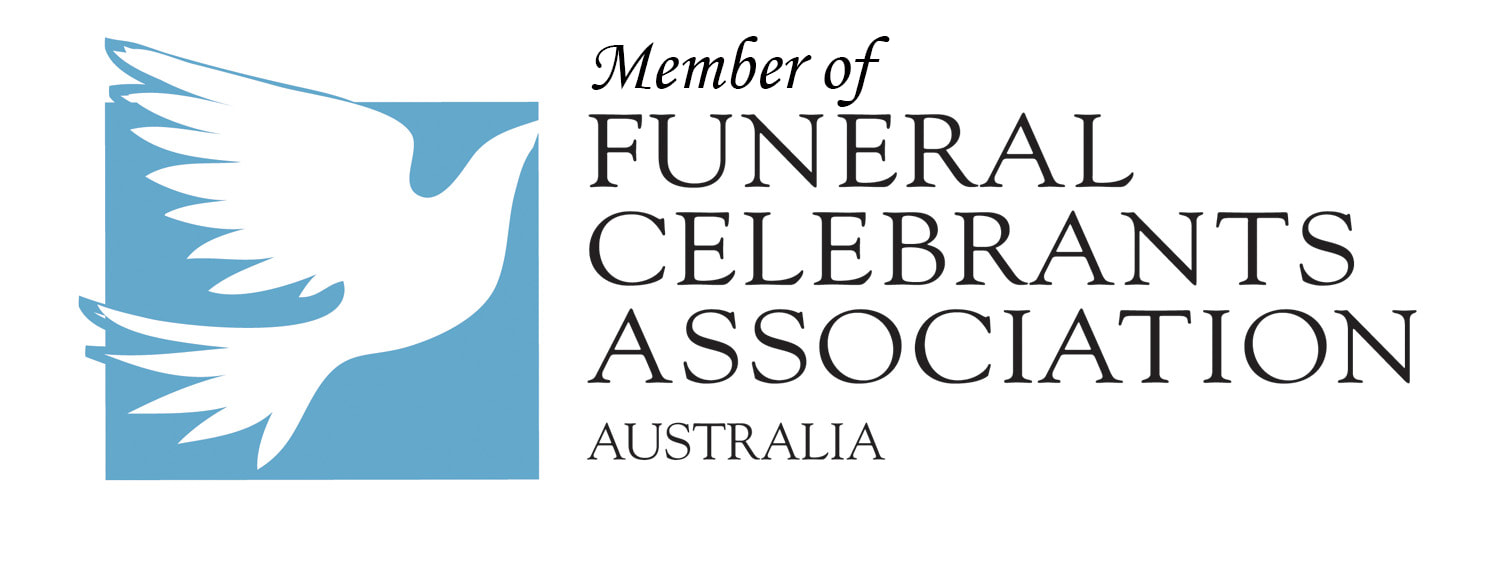The first (of many), and the most important form that you will fill in with regards to getting your wedding plans legally underway is the Notice of Intended Marriage form or the NOIM.
If you have decided that I am the marriage celebrant for you and your fiancé, that you both feel comfortable with me, and you have agreed to my terms, conditions and fee, I MUST receive your notice of intention to marry or NOIM form at least 1 month before the date of the wedding ceremony and no earlier than 18 months before the date of the wedding.
How do we fill in the NOIM?
Download my guide.
Be aware of the legalities of marriage.
You can fill this in the NOIM with me, your celebrant (and I am also a Justice of the Peace), or you can download the form, fill it in and have it witnessed by me when we meet. Or you can have it witnessed by one of the following authorities and then give it to me:
If you're overseas and need to get the NOIM witnessed, due to a being unable to be in Australia before the NOIM is due, you can do so by having one of the authorities below witness:
I must receive the NOIM at least 1 month before the date of the wedding ceremony and no earlier than 18 months before the date of the wedding.
There are circumstance where one month notice can be shortened, in which case a prescribed authority will need to allow this shortening of time. It is sometimes the case when one of the parties may not be present at the signing of the NOIM and it being sent to the celebrant 1 month before the wedding. This is acceptable as long as the remaining party sign the NOIM prior to the wedding being solemnised. See Applying for shortening information further down this page.
Proof of date and place of birth is required by the Celebrant to complete the NOIM.
Provision of appropriate ID enables the me to assure authorities, when asked, that you are who you say you are. The documents that you can use to prove this are:
Have either you or your fiancé been married before?
If so, then you will need to provide me with (and I must sight them), evidence of death of a spouse, nullity or dissolution of your marriage to me as your celebrant. If you do not have these documents then you will need to obtain them from the relevant Family Courts or Birth Deaths and Marriage Section of the your state government. I cannot do this for you.
What if my fiancé is not available to fill in this form?
It is sometimes the case that one of the marrying parties may not be present at the signing of the NOIM and/or the NOIM being provided to the celebrant at least 1 month before the wedding. While it's not my preference it is acceptable as long as the remaining party signs the NOIM prior to the wedding being solemnised.
Finally, when signing the NOIM, you will both need to confirm that you have read the privacy notice on the front of the NOIM.
This aims to ensure that parties have access to information about how their personal information would be used.
Apply for a shortening of time (less than 30 days)
Under federal marriage legislation only a ‘prescribed authority’ may, if satisfied that circumstances prescribed by regulation have been met, authorise an authorised celebrant to solemnise a marriage.
A prescribed authority is an officer or employee of the Commonwealth, a State or Territory (Canberra ACT), appointed by the Attorney-General. Prescribed authorities are authorised, among other things, to authorise a marriage celebrant to proceed with a marriage ceremony where the minimum 1 month notice has not been provided (shortening of time).
The circumstances for shortening the notice period of 30 days, are as follows with examples taken from the ACT Registrar Generals application form.
COVID-19 travel restrictions and border closures are not likely to be considered adequate reasons according to several state Government websites.
If you have decided that I am the marriage celebrant for you and your fiancé, that you both feel comfortable with me, and you have agreed to my terms, conditions and fee, I MUST receive your notice of intention to marry or NOIM form at least 1 month before the date of the wedding ceremony and no earlier than 18 months before the date of the wedding.
How do we fill in the NOIM?
Download my guide.
Be aware of the legalities of marriage.
You can fill this in the NOIM with me, your celebrant (and I am also a Justice of the Peace), or you can download the form, fill it in and have it witnessed by me when we meet. Or you can have it witnessed by one of the following authorities and then give it to me:
- another authorised Marriage Celebrant
- a justice of the peace
- a Commissioner for Declarations under the Statutory Declarations Act 1959
- a barrister or solicitor
- a legally qualified medical practitioner
- a member of the Australian Federal Police or the police force of a State or Territory.
If you're overseas and need to get the NOIM witnessed, due to a being unable to be in Australia before the NOIM is due, you can do so by having one of the authorities below witness:
- an Australian Diplomatic Officer
- an Australian Consular Officer
- a Notary public ( this is the easiest option )
- an employee of the Commonwealth authorised under paragraph 3(c) of teh Consular Fees Act 1955
- an employee of the Australian Trade Commission authorised under paragraph 3(d) of the Consular Fees Act 1955.
I must receive the NOIM at least 1 month before the date of the wedding ceremony and no earlier than 18 months before the date of the wedding.
There are circumstance where one month notice can be shortened, in which case a prescribed authority will need to allow this shortening of time. It is sometimes the case when one of the parties may not be present at the signing of the NOIM and it being sent to the celebrant 1 month before the wedding. This is acceptable as long as the remaining party sign the NOIM prior to the wedding being solemnised. See Applying for shortening information further down this page.
Proof of date and place of birth is required by the Celebrant to complete the NOIM.
Provision of appropriate ID enables the me to assure authorities, when asked, that you are who you say you are. The documents that you can use to prove this are:
- an official birth certificate, or an extract of an entry in an official register, showing the date and place of birth of each party - these can be Australian or International
- or, a passport (it can be expired but cannot be cancelled) showing the date and place of birth
- or, a statutory declaration made by the party or a parent of the party stating that, for reasons specified in the declaration, that it's not practical to obtain such a certificate and to state to the best of the declarent's knowledge of when and where the party was born.
Have either you or your fiancé been married before?
If so, then you will need to provide me with (and I must sight them), evidence of death of a spouse, nullity or dissolution of your marriage to me as your celebrant. If you do not have these documents then you will need to obtain them from the relevant Family Courts or Birth Deaths and Marriage Section of the your state government. I cannot do this for you.
What if my fiancé is not available to fill in this form?
It is sometimes the case that one of the marrying parties may not be present at the signing of the NOIM and/or the NOIM being provided to the celebrant at least 1 month before the wedding. While it's not my preference it is acceptable as long as the remaining party signs the NOIM prior to the wedding being solemnised.
Finally, when signing the NOIM, you will both need to confirm that you have read the privacy notice on the front of the NOIM.
This aims to ensure that parties have access to information about how their personal information would be used.
Apply for a shortening of time (less than 30 days)
Under federal marriage legislation only a ‘prescribed authority’ may, if satisfied that circumstances prescribed by regulation have been met, authorise an authorised celebrant to solemnise a marriage.
A prescribed authority is an officer or employee of the Commonwealth, a State or Territory (Canberra ACT), appointed by the Attorney-General. Prescribed authorities are authorised, among other things, to authorise a marriage celebrant to proceed with a marriage ceremony where the minimum 1 month notice has not been provided (shortening of time).
The circumstances for shortening the notice period of 30 days, are as follows with examples taken from the ACT Registrar Generals application form.
- Employment related or other travel commitments
- Wedding or celebration arrangements
- Medical reasons
- Legal proceedings
- Error in giving notice of intended marriage
COVID-19 travel restrictions and border closures are not likely to be considered adequate reasons according to several state Government websites.




